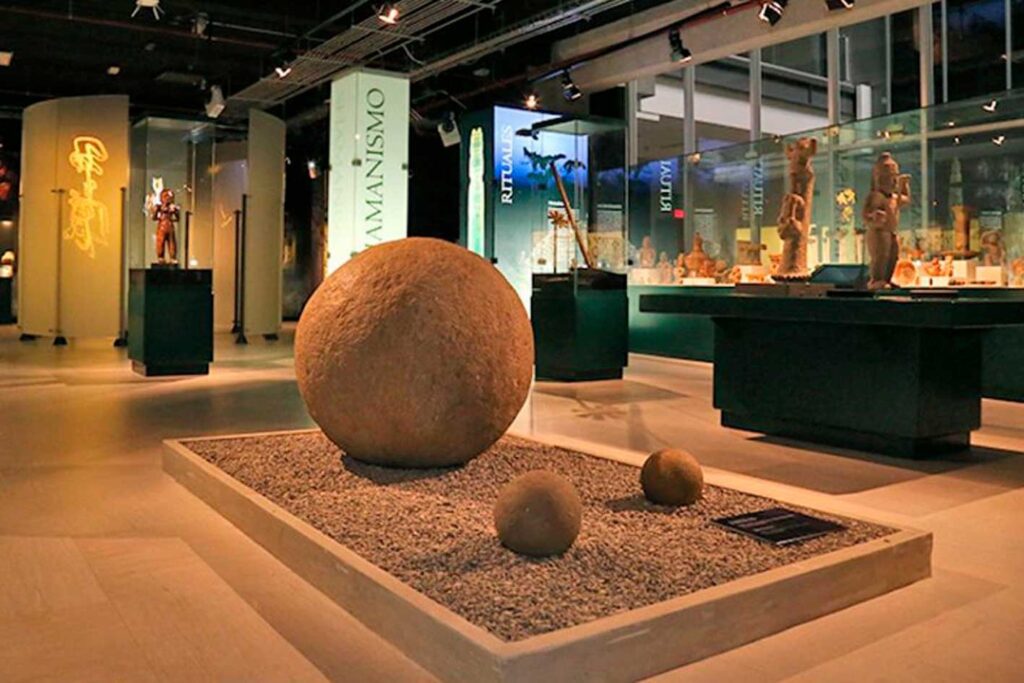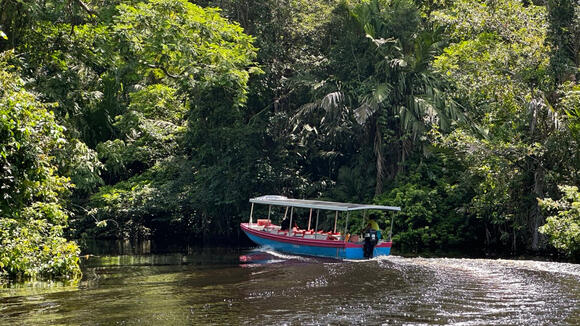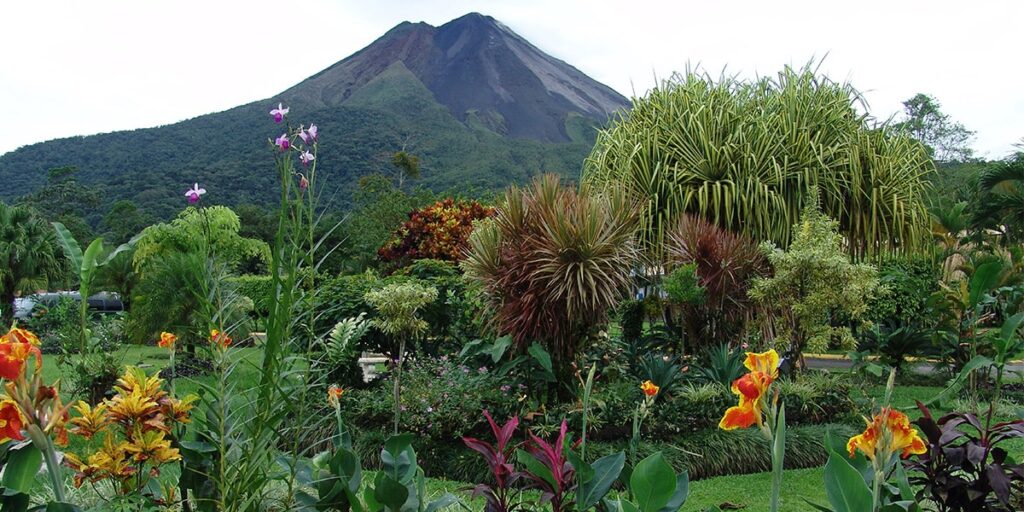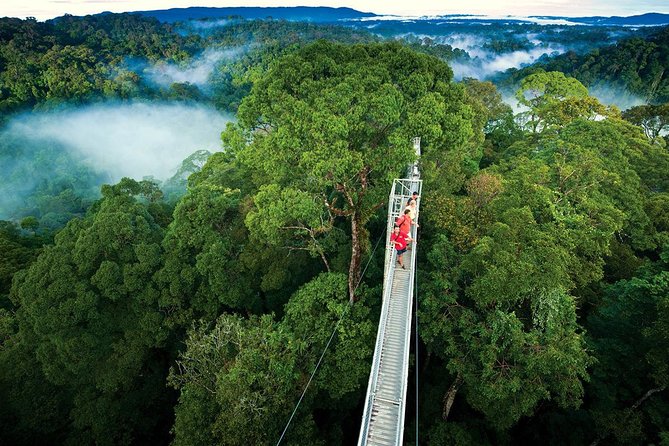Costa Rica : What to see in Costa Rica? Where to start? Most of the hot spots are located in the northern half, between San José, the Caribbean coast, and the Pacific beaches. An anthology of the must-sees to visit in around ten days, to give yourself an excellent overview of the country on your first trip.
Forests, beaches, mountains, volcanoes… Costa Rica has more than one trick up its sleeve. And for good reason, we only hear good things about this small Central American country. On September 20, he was named “United Nations Champion for the Earth,” the highest environmental distinction awarded by the UN. It is not surprising for a country whose energy it produces to have been 98% renewable for five years now. Here, the environment is a priority, and the preservation of the ecosystem is a priority. Thus, travelling the roads from north to south or from one coast to the other, we cross varied landscapes, but green always dominates. Nature blazes, wildlife thrives, and man respects everything.
Despite its limited surface area, Costa Rica is a plural country. It’s hard to be bored when you arrive there for the first time. From the capital San José to the beaches of the Pacific via the volcanoes of the north, we suggest an idea for an itinerary covering the essentials of this small country, great for the richness of its landscapes and the experiences it offers.
Day 1: Stop in San José, the capital
A trip to Costa Rica always begins with a stopover in San José. San José Juan-Santamaría International Airport is located in the northwest of this city of 2 million inhabitants, where all flights arriving from Europe land. It takes around forty minutes to reach the small capital, which has developed in the heart of the country, on a plateau at an altitude of 1,200 meters. Spending a day there serves as an introduction to Costa Rican culture before embarking on a journey through the country!
Smell the atmosphere of the city
Just walk along the long Avenida Central to feel the pulse of the city. It leads to the central market ( Mercado Central ), which gradually comes to life throughout the morning. The traders display their fruit or vegetable stalls, each tavern has its own atmosphere, and the inhabitants of San José, who are called “Josefinos” here, like to come and drink their coffee there in the morning. The Central Post Office is very close. It is one of the last colonial buildings in the city centre. The Teatro Nacional, for its part, stands out thanks to its neoclassical facade with columns. The interior is richly decorated with scrolls and gilding, and good society flocks there to attend ballets or major concerts.
Visit the most beautiful museums in San José
San José is not so much a city of museums. Two of them, however, are worth the detour. First of all, the Jade Museum, which has occupied a brand new building since 2014, is where you can admire the world’s largest collection of pre-Columbian jade. Nearly 7,000 pieces of finely worked jade are exhibited there, representing snakes, shamans, and even fertility goddesses.

A few blocks away, the Pre-Columbian Gold Museum has found refuge under the Plaza de la Cultura, and its access is very secure. It’s like walking into a bank. It houses a priceless collection of gold objects, each as resplendent as the next: coins, necklaces, amulets, etc. Each example is unique, which makes this collection one of the most important in Latin America after those of Lima and Bogotá.
Days 2 & 3 — First contact with nature in Tortuguero
After San José, head for the Caribbean Coast for two days. The Tortuguero region is still very wild. There is no road to get there. It can only be reached by plane from San José or by boat from Puerto Limon. Although the journey can be long, once there, we discover a lively village where an Afro-Caribbean atmosphere reigns. It is possible to visit this region year-round, but the peak of activity occurs in July and August.
Observe turtles laying eggs
At this time of year, green turtles arrive on pristine beaches to lay their eggs in the sand. Leatherback turtles tend to lay their eggs in April, Hawksbill turtles between March and October, and Olive Ridley turtles between March and October. No matter when you come here, there is always a chance to observe these endangered species dragging their shells in the sand to dig the ideal nest.
Best of all, witnessing an egg-hatching scene is one of the most moving experiences there is. Dozens of tiny turtles, barely out of their shells, use all their strength to reach the shore and dart into the immensity of the Caribbean Sea. Few of them will succeed in reaching adulthood and, in turn, lay their eggs on the same beach where they were born.
Discover the “little Amazon” of Tortuguero National Park
Beyond the beaches, Tortuguero National Park extends over 311 square kilometers inland. Its biodiversity is so luxuriant that it is nicknamed “the little Amazon.”. People come here to navigate the famous canals, which were dug in 1974 to connect a series of lagoons and rivers. 400 species of birds, 60 species of frogs, and 30 species of freshwater fish make up the local fauna. There are also three species of monkeys, freshwater turtles, and crocodiles sneaking incognito in the mangroves!

It’s best to have a good pair of binoculars with you to observe the toucans, egrets, and other macaw parrots that live in this large wilderness sanctuary where nothing seems to have changed for hundreds of years.
Days 4 & 5: Discovery of the Arenal Volcano Region
Admire the silhouette of the Arenal, an icon of Costa Rica
This is one of the postcards of Costa Rica. The Arenal Volcano is this perfect cone that overlooks the jungle in the northwest of the country. Its formation dates back 7,000 years. It was thought to be almost extinct when it erupted in July 1968, after 300 years of inactivity. Regular eruptions took place until 2010. It has since fallen asleep again. As the region is rainy, vegetation has already begun to reline the petrified basalt lava flows. Everywhere, the forest has regained its rights.
La Fortuna is the closest town to the volcano. It is connected to Tortuguero by planes connecting the two destinations twice a week. This is where most of the hotels are located, and this is where you base yourself before traveling around the area for at least two days. It is the best gateway to the Arenal Volcano National Park, where hiking trails wind between lava flows and immense trees, sometimes centuries old. Located outside the national park, the Mistico Arenal Hanging Bridges Park allows you to explore the canopy thanks to a series of suspension bridges. The longest is 97 meters long, and the tallest overlooks the void for 25 meters. We quickly felt like Indiana Jones in the middle of the tropical rainforest!

Sailing on Lake Arenal or relaxing in the hot springs
Behind the volcano lies the large Laguna de Arenal, the largest lake in Costa Rica. The site is perfect for kayaking from cove to cove. By taking a step back as much as possible and moving away from the volcano, a viewpoint allows you to observe the volcanic cone, which is reflected in the water of the lake. The photo is essential!
Finally, the volcano area is a hot spot for hydrotherapy thanks to its hot springs. All the water that springs from the ground in this region is heated naturally, thanks to the presence of the volcano. This water is channeled in places, and beautiful lodges have created thermal trails. We come to relax under waterfalls, in swimming pools of all sizes, in which the temperature varies from 32 to 67°C! An original way to regenerate after a day of hiking in the thick jungle of the volcano slopes.
Day 6: Stopover in the clouds in Monteverde
On the road between Arenal and the Pacific coast, a stop at Monteverde is obvious. This village, perched at an altitude of 1,330 meters, is a stone’s throw from the volcano, but the road leading there goes around a massif and takes more than two hours. It was founded by Quakers who fled the United States in the 1950s. They took refuge in this “bosque nuboso ” (cloud forest) to establish this village, in fact often immersed in an almost mystical mist.

There is a very relaxed atmosphere on the steep streets of Monteverde. Many travelers base themselves here to explore the mountains of the Cordillera de Tílaran and search for the animals that inhabit them. Snakes, lizards, frogs, butterflies, birds… The fauna is rich, multicolored, and varied.
Think you’re Tarzan!
Thrill seekers prefer to give themselves a few thrills on the adventure courses set up in the trees. Selvatura Park is one of the most important of them. It has 18 platforms and 3 kilometers of cables installed on a plot of primary forest. We move from zipline to zipline between the treetops. The panoramas of the canopy are breathtaking, and the adrenaline builds quickly. A special mention goes to the large vine from which we throw ourselves through the jungle like a modern-day Tarzan. Excitement guaranteed!
Taste one of the best coffees in the world
Also, the Monteverde region is at the forefront of organic farming. Many fincas offer tours of their farms, where they make cheese or grow cocoa. Coffee plantations are also very present. The Café de Monteverde House has been producing 100% organic arabica since 1989. Visits to the plantation tour the plots of coffee trees. We then understand how the beans are harvested, sorted, and roasted. The whole thing ends with a tasting of this coffee, recognized as one of the best in the world.
Days 7, 8 & 9: Relax on the beautiful beaches of the Pacific coast
Here comes the sea again! After several days in the forests in the heart of the country, the west coast appears. The Pacific unfurls its infinite beaches. As soon as you come down from Monteverde, you can already see the coastline in the distance. From Puntarenas, you have to drive for a good three hours near the water to reach Quepos. There remains a bit of authenticity in this coastal town, which has seen its appearance change in recent years and the massive arrival of visitors.

Watch whales… or go surfing!
The central Pacific coast of Costa Rica is also a hotspot for whale watching. The long stretch of coastline that stretches south of Quepos has even been named “Costa Ballena.”. Going down the coast, the atmosphere becomes more and more authentic, and visitors are increasingly rare. Here and there, we come across a few surfers’ huts coming to surf on the excellent spots that dot the coast.
The small town of Uvita exudes calm and tranquility. It is located near the entrance to Marino Ballena National Park, which owes its name to the humpback whales that like to breed in the area. It is here that we discover Punta Uvita, this famous double sandbank that advances towards the sea and ends with a reef of rocks. At low tide, it looks like the tail of a cetacean from above. An astonishing natural site where you can come and relax without meeting a single soul and find yourself alone facing nature that is still 100% wild. This is the very definition of happiness.
Web story: Costa Rica 2024: Insider Tips on When to Go and When to Avoid!
